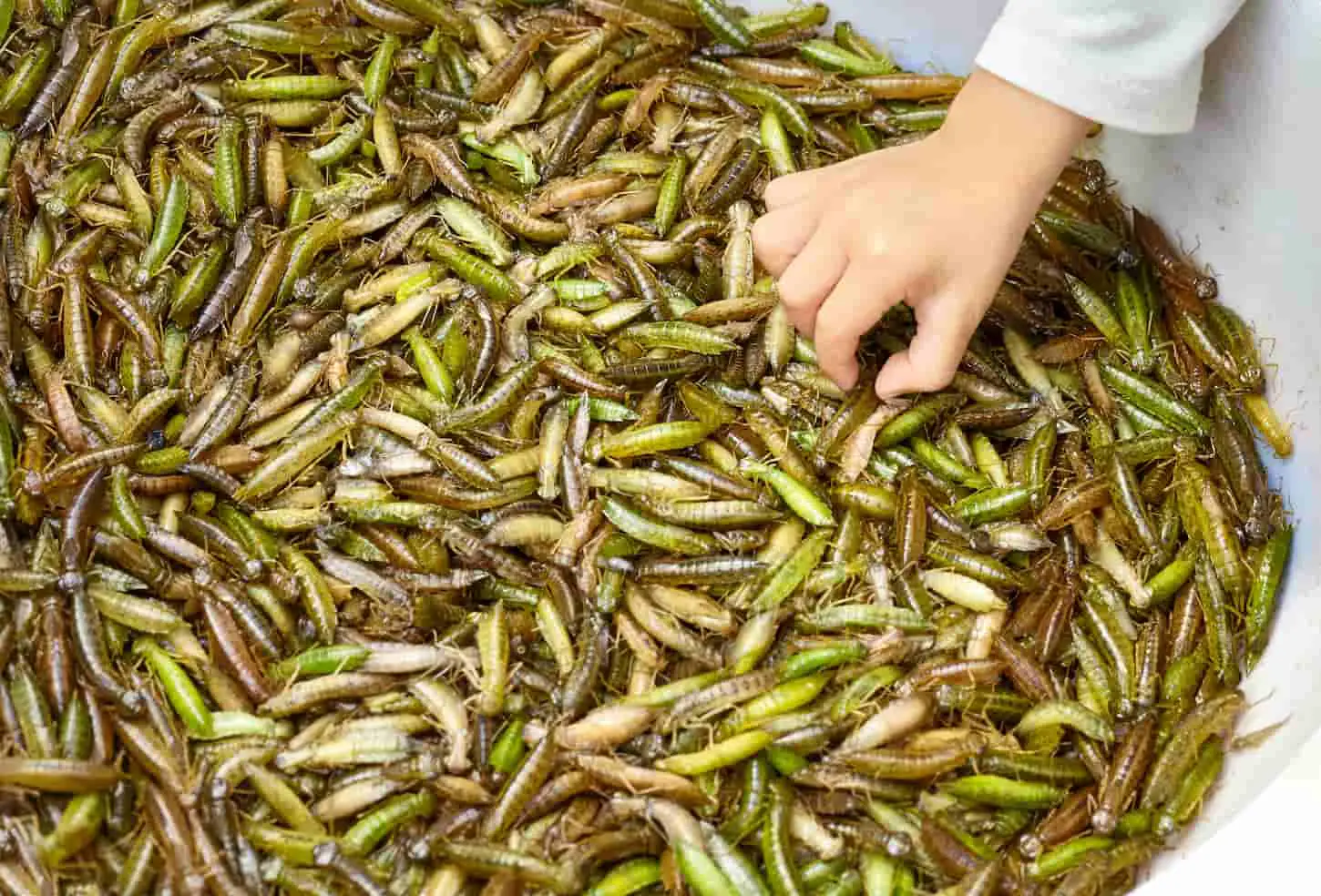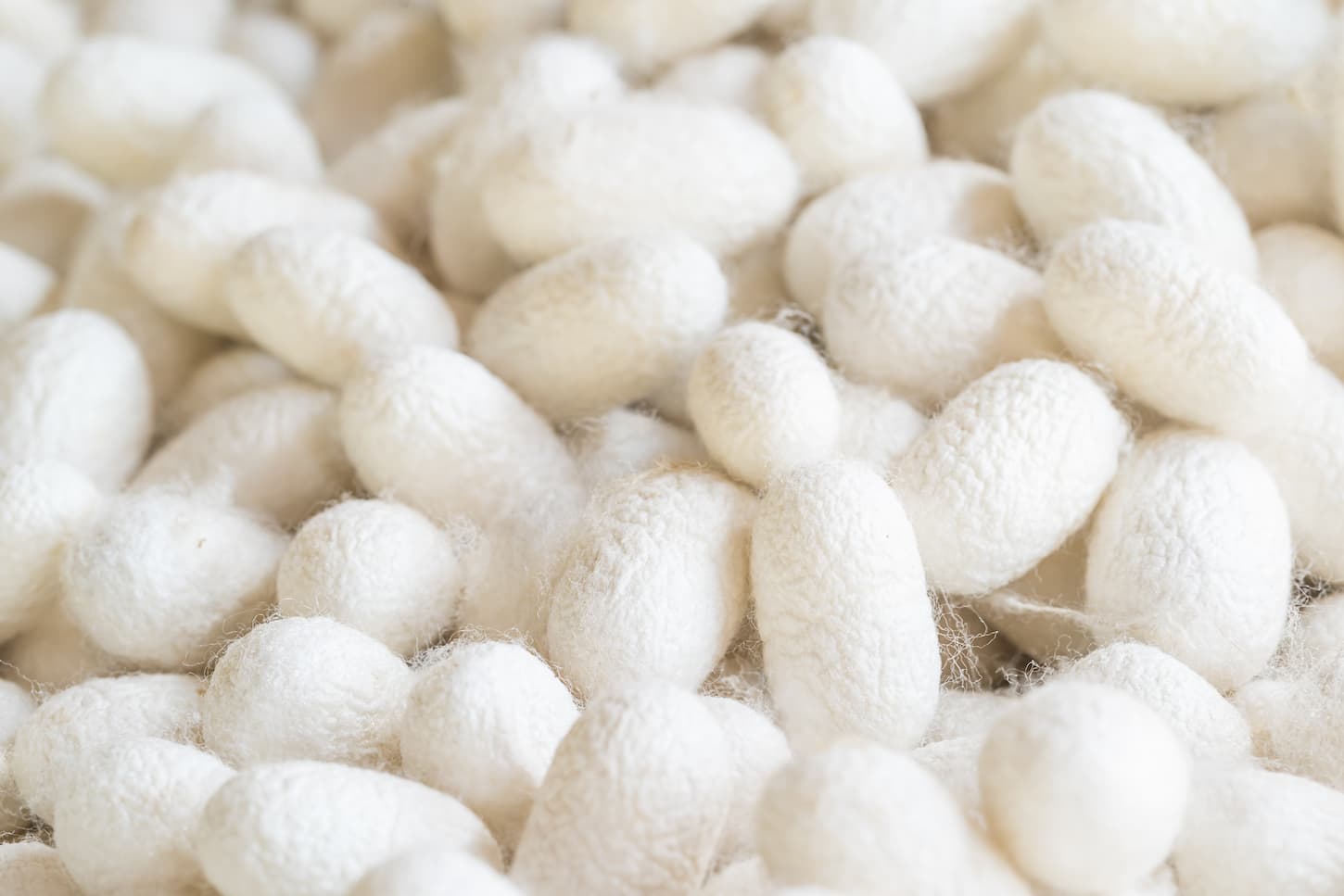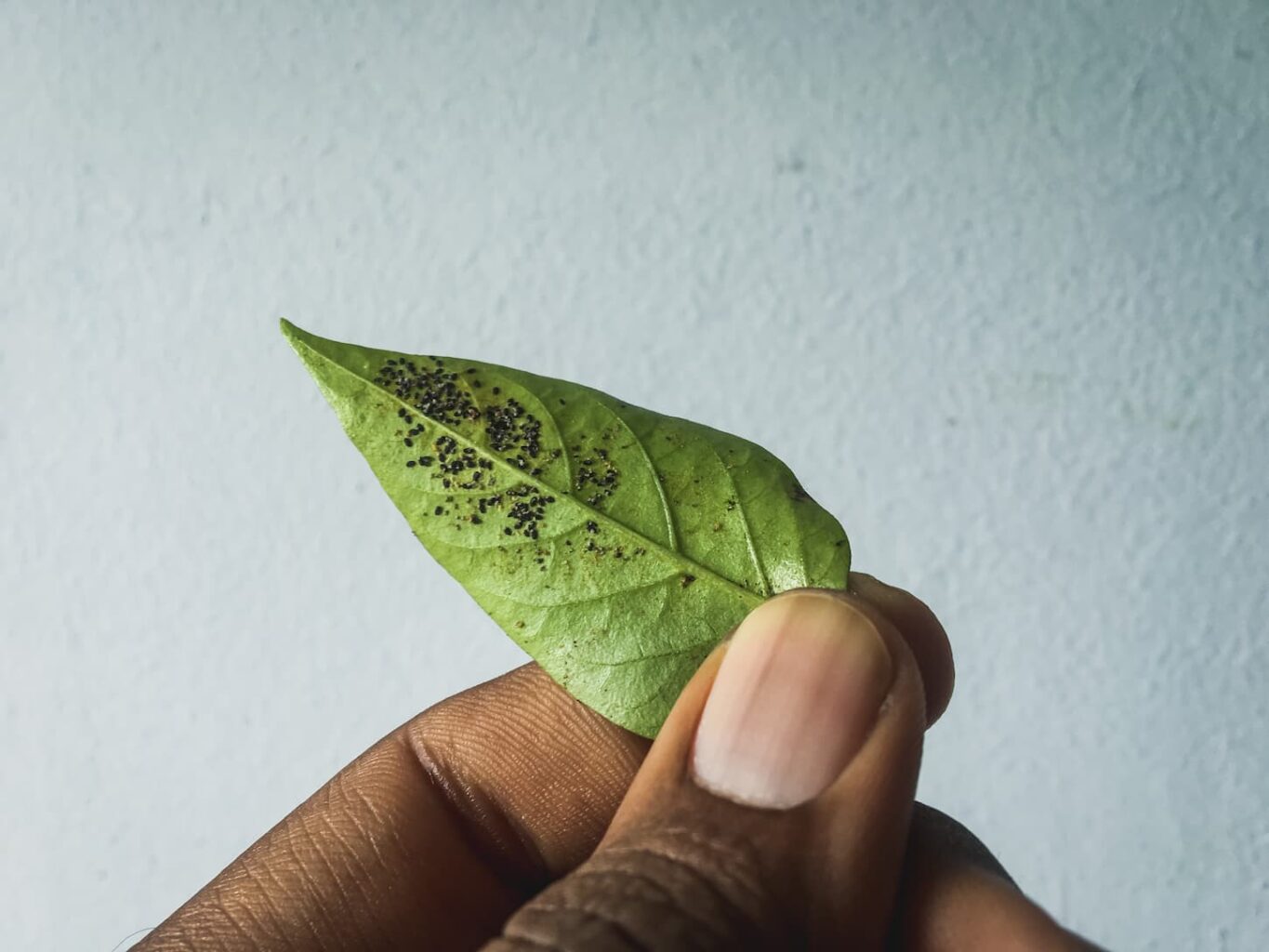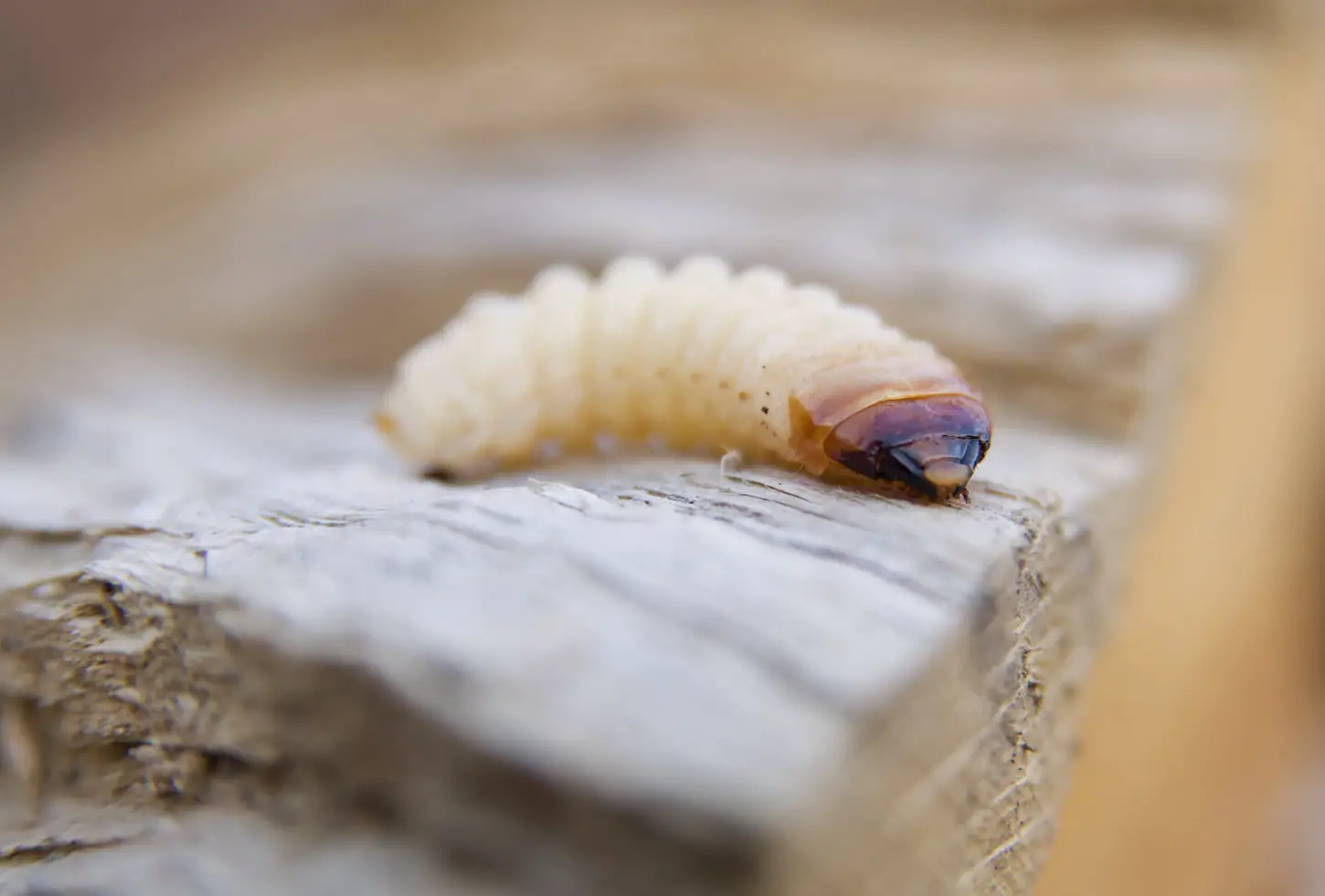Did you know the freeze-dryer can also freeze-dry insects? Why would anyone want to freeze dry bugs? Some people like to eat freeze-dried insects. Other people use freeze-dried insects as a special treat for their farm animals or even pets like hedgehogs and reptiles.
Freeze-Drying insects is like freeze-drying any other food. It can be as simple as putting them into the freeze-dryer, or they can be frozen first and then popped into the freeze-dryer later.
This article will guide us through what types of insects can be freeze-dried, how to do it, and how to use freeze-dried bugs for our own consumption or as treats for animals.
It’s surprising how much freeze-dried insects benefit our animal friends and us.

How To Prepare Insects to be Freeze-Dried
The first step is to gather the insects. Next, humanely dispatch them by putting them in a regular freezer for at least 10 minutes. Then, place the frozen insects on trays and put them in the freeze-dryer to run.
Now, for the freeze-dried insects to be used for eating, always collect the insects from a dedicated farm or breed them yourself.
This will ensure that they are easily gathered in bulk and don’t carry any pesticides or harmful chemicals.
The next step is optional but helpful. Freeze the insects in a regular freezer first before putting them in the freeze-dryer tray. This is considered a humane way of ending insects.
It is also helpful in preventing insects from jumping off the tray before putting them in the freeze-dryer.
Lastly, put them in the trays and let the freeze-drying begin. Some insects will be freeze-dried within 48 to 72 hours.
Once done, they can be used right away or stored in glass jars. These insects can last for years if stored properly like any freeze-dried food.
Meanwhile, if the plan is to freeze-dry the insects for scientific purposes, they don’t need to come from a farm.
Instead, they can be harvested from the backyard by spraying a diluted Nematoda solution. Some sites recommend that the mixture has 10% formalin solution, 70% alcohol substitution, and 30% water.
Once the solution is mixed and ready, spray it onto foliage or anywhere insects might be hiding.
Insects will then enter a comatose state, and it will be easy to harvest them either by hand or by vacuum. Make sure to handle them with care if using them for experiments so none of their limbs will get damaged.
Since the insects are already in a comatose state, they can be transferred onto Petri dishes. There can be up to five insects per dish, and make sure there is space between the insects.
After transferring them, put the Petri dishes in the freeze-dryer and let the freeze-drying process begin.
| Use | Gathering | Humane Way to End (Prior to Freeze-Drying) | Handling before Freeze-Drying |
|---|---|---|---|
| Consumption | From farms or breed them yourself | Put them in containers, then freeze them in a regular freezer first | Put them directly on the tray |
| Experiments | Anywhere | Anesthetize with Nematoda solution | Separate them on Petri dishes |
How to Freeze-Dry Insect Eggs
Insect eggs or larvae can also be freeze-dried using a similar method. If they are eggs, they can be put directly into the freeze-dryer. If there are insect larvae, it’s best to dispatch the larvae humanely. Freeze larvae first before putting them into the freeze-dryer.
Other methods such as blanching, carbon dioxide asphyxiation, and boiling are also possible, but we find freezing them to be the easiest and most humane way of preparing them to be freeze-dried.


How To Freeze-Dry Pupa
When breeding mealworms or super worms, they go through the pupa phase. It is possible to freeze-dry in this stage. To freeze-dry them, simply gather them and pop them in the freezer for a day or two. Once this is done, put them in the tray and place them in the freeze-dryer.
It’s really that simple.
Steps to Freeze-Dry All Insects
The basic steps to freeze-drying insects are to gather the insects, humanely dispatch them via freezing, then freeze-dry and store them until they are needed. Some insects might need a little more care.
Crickets are a popular insect to freeze-dry, and some even claim a simple house cricket is a type of superfood with the amount of nutrition they have, even in just a spoonful.
Aside from that, farmers give freeze-dried crickets to their chickens as a treat.
Here are some useful tips for freeze-drying several types of insects:
Tip #1: Freeze-drying crickets
It’s always best to get crickets at dedicated farms. Since they jump around a lot, put them in a closed container on a tray and then freeze them overnight.
After freezing them, they can be removed from the container and put in the freeze-dryer.
Tip #2: Freeze-drying mealworms
Mealworms are another popular insect that can be freeze-dried. We recommend raising these insects yourself to control the type of food they eat. If they have nutritious food, they will be healthy to eat or feed pets.
If raising mealworms, leave a few of them to mature – they will eventually become darkling beetles, which can also be freeze-dried.
Separate the beetles into different nests. Soon there will be eggs and pupa in the nest. Both the eggs and larvae can be freeze-dried or wait until they become mealworms.
This way, there will always be mealworms ready to freeze-dry.
Tip #3: Freeze-drying super worms
These can also be homegrown, but we prefer to buy ours. Super worms are a lot like mealworms. Mealworms cannot harm pets even if they are fed to them while they are still alive.
On the other hand, super worms will bite and sting pets if fed to them while the worms are still wriggling.
If there are excess mealworms, they can be fed directly to pets, even if they are not freeze-dried. To avoid feeding super worms that are alive to pets, it’s better if they are freeze-dried.
Super worms need to be frozen for at least two days. However, they are slightly more resistant to the cold than mealworms are, so sometimes, it takes a day more before they are ready to be freeze-dried.
Super worms are better in a pet’s diet because they have higher calcium, fiber, and fat concentration than mealworms. When taking care of old reptiles, super worms are the most nutritious insect.
How to Use Freeze-Dried Insects
Freeze-dried insects can be used for personal consumption, not just for animals. They can be eaten when they are freeze-dried, added to salads, ground up to mix with pastry, and there are many other ways to eat them.
For human consumption
If we are curious about how a cricket or a mealworm would taste fresh out of the freeze-dryer, we can pop one into our mouth right away. The biggest hindrance is our own fear of eating insects.
Pro tip: if you’re afraid of trying insects right off, start with insects dipped in chocolate or ones that have been chopped into oblivion as part of a salad. These are great first steps into eating insects, especially if it’s a new experience for you.
They can be sprinkled onto salads, and it’s a game-changer. Freeze-dried insects on a fresh salad will give the salad an extra crunch and flavor.
If you haven’t warmed up to eating bugs yet, but are curious about eating them, another way to try them is to grind up the bugs in the blender and make them into flour. Then they can be added to pastries and even burger patties for dinner. Extra protein!
Speaking of pastries, edible insects can also be coated in sweets such as chocolate, caramel, and sugar syrup. Once the coating hardens on these critters, they can make a great snack.
The grandest hurdle for insect consumption is getting through the “Yuk!” factor. Some folks aren’t too keen on the idea of having bugs as part of their diet.
However, more people have been growing exotic food. In fact, several Asian countries have always included insects in their diet.
Eating edible insects is nothing to frown upon because of the nutritional benefits these bugs have. Insects have been part of the human diet for ages.
However, in some countries, people have stopped including it in their diet, which makes it hard to reintroduce the delicacy.
For animal consumption
Aside from human consumption, freeze-dried insects can also be used to feed pets or even live produce like chickens.
For animals like reptiles, insects are necessary for their diets. Meanwhile, it’s also an essential part of the chicken’s diet. So, bugs are both a treat and a source of great nutrition for chickens.
If a reptile at home depends on an insect diet, simply drop the freeze-dried insects into their cage or nest. If they aren’t approaching or touching the food, try feeding them one by one to the pet with a pair of chopsticks until they recognize the freeze-dried insects as food.
With chickens, sprinkle the freeze-dried insects onto the foliage where they are foraging for bugs. Insects are an amazing source of protein for them.
Freeze-dried bugs will also help them build muscle and cover up any lack of nutrients that regular feeds do not supply.
An alternative is to grind them up and add them to their regular feed. This is great when wanting to make sure all the chickens get their daily fill of insects. This is also perfect for any rainy day in the coop.
How Can I Get Freeze-Dried Insects if I Don’t Have a Freeze-Dryer?
When freeze-dried insects are needed for personal consumption or feeding pets, but there is no freeze-dryer at home, there are several online stores where these edible bugs can be ordered.
First, there’s Insect Mix. At the time of publication, cowcrack.com (I have no affiliation with them) sells bags of edible insects made by Newport Jerky Company that are ready for consumption. Update: the link to the site has been removed, as the product appears to no longer be available.
If you’re looking for freeze-dried goodies for pets or farm animals, most farm supply and pet stores also sell bags of freeze-dried insects. They’re even more common in dedicated shops that sell food for reptiles.
Spoiler alert: the best prices for freeze-dried insects are at the farm supply stores, like IFA, Cal Ranch, and Tractor Supply.
There is a smaller option for insects there, though. Pet stores generally have a wider variety of options.
Are there Other Methods for Consuming Insects?
There are several methods for consuming bugs without freeze-drying. These methods include pan-frying, oven roasting, and even simply freezing them are good options.
The first step should always be to freeze them; this will make any process you decide to do easier. They can also be eaten directly after freezing or fed to chickens.
At this point, the bugs are already immobile and won’t escape no matter what is done to them.
Oven roasting most insects has the same effect as freeze-drying them. However, freeze-drying gives more controlled and consistent results.
Unfortunately, people tend to overcook insects. An insect that’s been roasting for too long will be burnt and bitter to the taste.
This is a common problem that’s hard to avoid when cooking a batch of insects.
Pan-frying bugs is also another terrific idea and is common in Thailand. They can be served straight out of the pan or added to salads and pasta.
This method is faster than freeze-drying. This is probably the easiest way to prepare insects for eating.
The best part is that all these methods can be used to prepare the insects for blending. Then after blending them, the insect flour can be added to anything, especially ground meat.
This will give you extra nutrients, especially protein, in the next burger you decide to make.

Key Takeaways and Next Steps
Finally, we have learned about all the benefits of freeze-drying insects – how to safely prepare them for human consumption and use them to feed pets and livestock.
Who knew they could be such a delicious snack and incorporated into our meals for extra protein and other nutritional benefits?
Resources
Learning from your own experience is essential, but learning from others is also intelligent. These are the sources used in this article and our research to be more informed as homesteaders.
- “Fluker’s Farm Tour: Freeze Dried Crickets.” YouTube, 26 Mar. 2015, www.youtube.com/watch?v=BdYfBKZB2pw.
- Fombong, Forkwa, et al. “Influence of Freeze-Drying and Oven-Drying Post Blanching on the Nutrient Composition of the Edible Insect Ruspolia Differens.” Insects, vol. 8, no. 3, 2017, p. 102. Crossref, https://doi.org/10.3390/insects8030102.
- Keilholtz, Jeffery. “How to Freeze Dry Insects.” Classroom.Synonym, 30 June 2020, classroom.synonym.com/how-to-freeze-dry-insects-12082869.html.
- Larouche, Jennifer, et al. “Effects of Killing Methods on Lipid Oxidation, Colour and Microbial Load of Black Soldier Fly (Hermetia Illucens) Larvae.” Animals, vol. 9, no. 4, 2019, p. 182. Crossref, https://doi.org/10.3390/ani9040182.
- “Newport Jerky Company Mixed Bugs.” Cow Crack, cowcrack.com/products/newport-jerky-company-mixed-bugs. Accessed 29 Apr. 2022.

I’m loving most of your articles, but I simply cannot roll my eyes hard enough at this one without hurting myself.
Haha fair enough!! I only experimented with this because buying freeze-dried insects (for the chickens) from the feed store can add up – but then I feel like I have to totally sanitize everything before doing another load in the freeze-dryer.